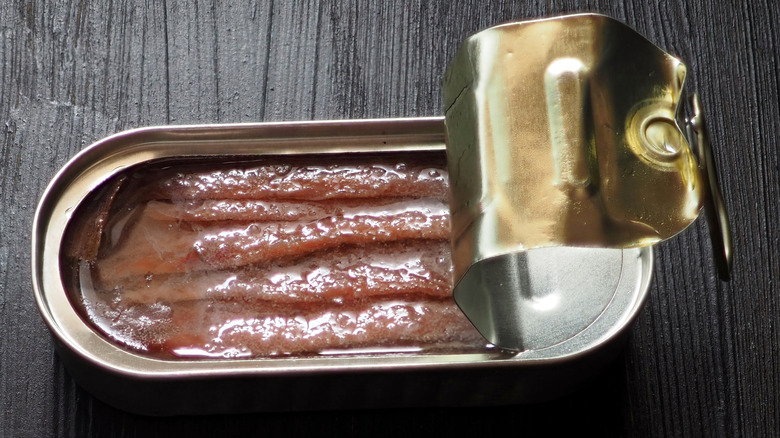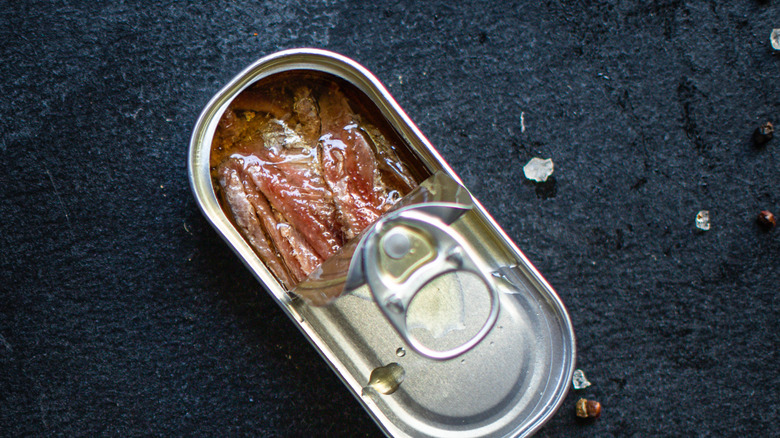What The White Substance In Your Anchovies Could Be
If you've ever opened a tin of anchovies and discovered a white substance inside, it can seem troublesome. But while your first impression might be that the fish inside has gone bad, the presence of that unknown substance might not necessarily correlate to spoilage. In fact, those little white blobs coating the anchovies could actually be due to an array of mostly harmless factors.
Salty and funk-filled, tinned anchovies are an ingredient that you should always have on hand. Although many diners tend to have strong opinions when it comes to the small and slender fish, anchovies have the power to add an abundance of flavor and significant umami to recipes, even when used sparingly. Versatile and packed with vital omega-3 fatty acids to support brain and heart health (via Healthline), adding them to your grocery list is a no-brainer.
Available both whole or packed as filets, anchovies are often packaged with salt or oil and kept in a glass jar or a tin. However, they can also be processed into a paste. With many experts weighing in, oil-packed filets tend to be a favorite as they add robust flavor in a pinch. Though Saveur recommends investing in quality anchovies sourced from Spain or Italy, there's still a risk in discovering pearly bits of matter in a tin of filets either before or quickly after opening — but what exactly is that stuff, and why does it appear, anyway?
Congealed fat, excess salt, or (worst case scenario) mold
To solve the mystery of what that white substance actually is, home cooks have taken to online forums like Reddit, where fellow foodies suggest that the white particles are likely bits of congealed fat (from the oil or the filets themselves) after being stored in the fridge. According to Taste of Home, olive oil's natural waxes can start to separate from the liquid in clumps as the oil is subject to cold temperatures, which can cause the oil to coagulate slightly. While this is one theory, this answer tends to consider a package of filets that's already opened.
For sealed jars or tins that have been kept at room temperature on supermarket or pantry shelves, there's another possible answer for what that ivory residue could be. Far from being harmful, Crown Prince shares that the substance could simply be an amalgamation of salt that collects around the edges of the tin.
Despite the fact that spoilage isn't likely the culprit for the white substance found in sealed jars or tins, improper storage after opening can still impact filets. Jars of oil-packed anchovies can simply be stored in the fridge, whereas the BBC advises that tinned anchovies be removed from their packaging and placed into another container, ensuring the fish be submerged in oil to prevent mold from appearing and resulting in cloudy, particulate-riddled oil.

